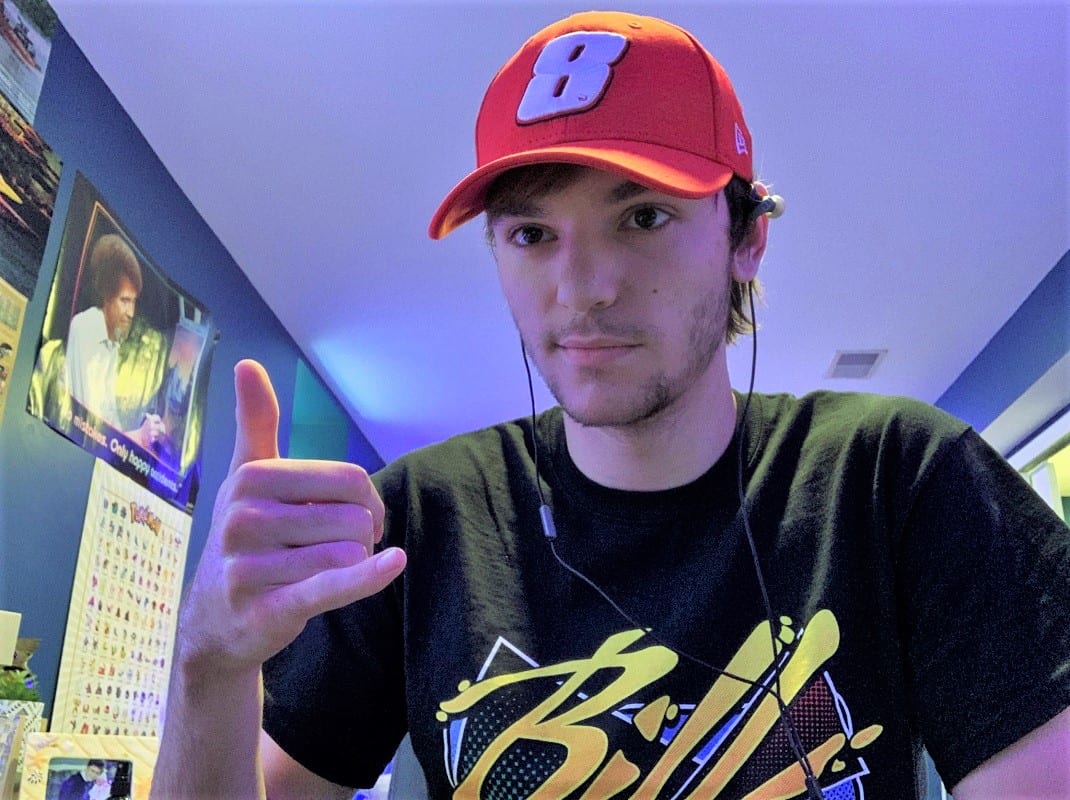Sweet began to receive demeaning messages and hate mail for the scheme he created, which led to further problems as he tried to compartmentalize his thoughts and continue his design work.
“Don’t get me wrong, there were a lot of messages that I got saying that, ‘Hey, this (scheme) is something I needed,’ but on the other hand, I did get a lot of hatred for it,” admitted Sweet. “That’s not to say that I didn’t expect it … because I did expect that to happen, but just not to the degree that it happened.
“It’s unfortunate. It went on and it kept going for months, until things got really, really bad.”
The culmination was Sept. 2, when Sweet posted a pair of concerning Tweets before “going off the grid,” leading many in the racing community to fear for his safety.
A massive wave of support from around the sim-racing and real-life NASCAR communities followed, with reactions coming from NASCAR Xfinity Series part-timer Ryan Vargas, multiple SiriusXM NASCAR Radio personalities, and Johnson.
With help from local authorities, Sweet was later found safely by several family members, but it was a period which he said he “barely has any memory of” and something that took him a moment to gather his thoughts before discussing.
“I’ll admit, the people who were talking … I fed into it. I continued to post, but it just got to a point where people started spreading lies about me. It was unsolicited lies, just no evidence at all,” Sweet recalled. “People were saying a lot of hurtful things about me and I wasn’t really in the best mental state at that point, so I never really processed a lot of it very well. Guilty until proven innocent, right?
“So I acted emotionally … I went on social, I started tweeting stuff and then people started connecting dots and thinking the worst,” added Sweet. “When it happened, when I put out those Tweets, I turned my phone off and drove off. I think I was out for about five hours and people were freaking out. It was with good reason, obviously, because of what I did … but people started calling me and the sheriff was called; when I realized how many people were concerned, that’s when reality set in and I realized what I’d done. I just broke down at that point. I started having a panic attack.
“It was a really, really rough time.”
Sweet was taken to a local hospital, where he was monitored in the emergency room before being admitted to an inpatient program for treatment and to learn coping strategies to improve his mental health.

All the while, the influx of support for Sweet continued from the outside world, with the hashtag #WeLoveLefty becoming a trend on Twitter and a formal petition started to reignite the push to get the Ally Pride paint scheme onto Johnson’s car.
That river of positivity — which was relayed to Sweet during the week that he was inside the inpatient program, with little to no contact to the outside world — was something that stayed with him.
“I was being told what was being said on social media when I was in the inpatient program and it really made me want to get out of there,” Sweet said. “I really was trying my best not to think about it, in a way, because I wanted to see all the support that people were giving me, because I really didn’t think I was going to affect that many people as much as I did.
“I felt like it (a potential suicide attempt) was a selfish action and people would be upset about it, but it just really was rough,” Sweet added. “I didn’t know what to do. The first day I was in the hospital, I just wanted to go home and see everyone, and I couldn’t.
“Heck, Ryan Vargas had a sticker with my logo on it and a bunch of me and my friends … we’d put in money and he put that on his Xfinity Series car that raced at Darlington (Raceway in September), and I didn’t even get to see it race. That was really disappointing,” he noted. “But really, I just wanted to say that I was OK, and I couldn’t. I had done something at that point that elicited that I needed help.”
To continue reading, advance to the next page.
